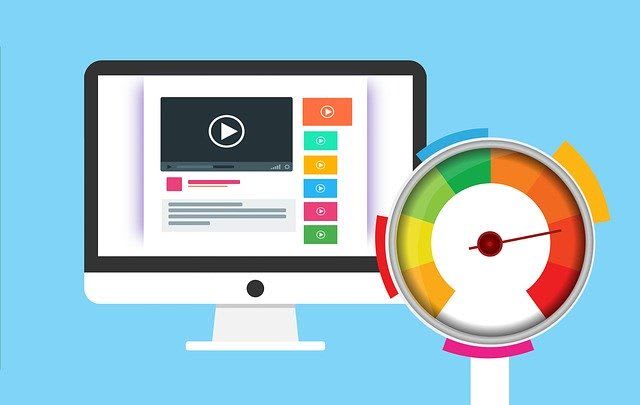Working on the content of your website is an extremely important task, but not the only one you should concentrate on. It is equally important to work on the loading speed of your pages. Failing to do so will result in unsatisfied visitors. We live in an era of high-speed internet, and no one wants to wait for the page to load more than expected. With that in mind, learn these 5 ways to speed up your website and keep your visitors happy!
Why loading speed plays a crucial role in managing a website?
Technology advances at a rapid pace. On top of that, Google releases new core updates that constantly change how websites work. With all of those changes, it is hard to keep up and have everything run smoothly.
With the previously mentioned fact that people do not want to wait for websites to load, it should be pretty clear why slow loading speed plays such an important role.
Per statistics, the loading speed of any page should be under 2 seconds. Anything more than that, and you are losing conversions fast. When casually browsing the internet, an average visitor will not wait more than 4 seconds for a page to load, and even that is considered slow. The loading speed issue could reduce your conversion rate by 50%. That’s a lot!
How do professionals do it?
If you want to do something right, no reason to invent the wheel all over again. Use tested approaches that always prove effective. With that in mind, we did a little research and spoke with a few professionals from, and here is what we learned.
1. Reduce the number of HTTP requests
Have you ever asked yourself why is a page loading so slowly? Well, when you click on a link that leads to a website, it generates a bunch of HTTP requests. These requests have the purpose of downloading different parts of the page. That includes scripts, images, stylesheets, and any object that is on the page. The more objects you have, the more HTTP requests are necessary to show the page to the viewers.
A simple way to solve this issue is to use the Developers Tools sidebar in Google Chrome. Open the page, right-click anywhere on the screen and go to Inspect. In the Network section, you will see a lot of information regarding the page you are inspecting. The two most important numbers you will look at are the loading speed of every element and the number of generated HTTP requests.
Caption: Reducing HTTP requests is one of the best approaches for speeding up your website.
These numbers will show you what elements slow down the loading of the page. If you reduce these numbers, the loading time of your site will be shortened.
2. Work on fixing the structure and size of your programming files
Once inspecting your website, it is important to look at the HTML, CSS, and JavaScript files in order to speed up your website. This is especially important if you are using a pre-built website template.
Try to reduce the number of these files, by combining them together. Another useful trick is to learn how to minify these files. What that means is, removing all the blank spaces and the number of rows in the file that don’t need to be there. Here is an example of a minified CSS script:
div a {
width: 100px;
height: 100px;
}
Minified version:
div a {width:100px;height100px;}
As you can see, any script can be shortened with this approach. The server needs less time to read minified versions of files.
3. Optimize images
Here is a really good way to speed up your website. As visual objects, images play one of the most important roles - attracting the visitor’s attention. However, not knowing how to optimize images for a website might turn into a disaster.
First of all, decide what the type and format of your images will be. For example, vector images should be used for logos and any flat image objects with simple colors. Use raster images that depend on pixels only when you want to present a high-quality picture with depth.
Caption: When building the pages of your website, always compress images and use the correct format for all image objects.
Furthermore, have in mind that, the more pixels an image has, the more time it takes for it to load.
If you are trying to speed up a WordPress website, do not import large images. WordPress has the option of changing the size, but the actual image will still be as large as it was when you imported it.
With that in mind, no matter what WordPress plugins you’re using, always compress images before importing. The desired size should be below 70 kb, or at least below 100kb.
4. The importance of asynchronous loading for scripts
There are two ways in which a script can load – asynchronous and synchronous loading.
Synchronous loading means that all scripts load one at a time.
On the other hand, asynchronous loading means that you allow multiple scripts to load at the same time.
Make sure that all of your scripts are set to load asynchronously to speed up your website.
5. Enable browser caching
This is not only a good way to speed up your website, but also a good strategy to reduce HTTP requests. Every time you visit a page on a website, all of the elements get stored on your hard drive in temporary storage called cache.
Caption: By fixing all of the roadblocks that hamper the loading speed of your website, you will get new conversions and keep all of your customers satisfied!
The main advantage is that, when you visit the same page next time, it will load from your cache without sending any HTTP requests.
Ways to speed up your website - explained!
Let’s do a quick summary of today’s key takeaways:
- reduce the number of HTTP requests
- minify and combine your scripts
- optimize and compress images
- use asynchronous loading for scripts
- allow browser caching
These 5 ways to speed up your website will greatly affect its loading speed and help you not only keep the old customers but have more conversions and get new customers with every visit!









